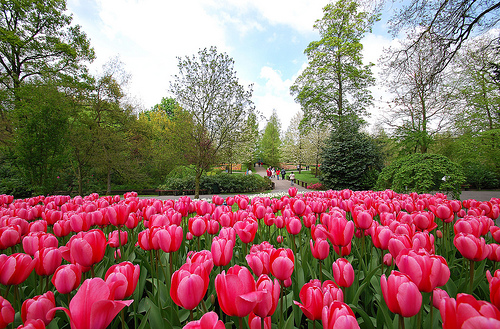Superduper Shallow Depth Of Field Of Nikkor 35mm f1.8 Lense
Ever wonder why those lense manufacturer never had designed lense with f-number smaller than f1.2? F-number is representing the size of the maximum aperture or opening diameter of lense. The smaller the f-number is, the larger is the lense aperture. The larger the aperture is, the higher the permeability of light is the lense. Thus, higher shutter speed is allowable for the same brightness of the image captured.
That is why the Nikkor 35mm f1.8 fixed lense is better for night photography where ambient lighting is limited. With its f-number of 1.8, it could absorb 3.5 times more light than those zoom lenses with aperture number of f5.6. So, for any night scene where Nikkor 18-55mm f5.6 kit lense needs shutter speed of at least 1 whole second normally, if Nikkor 35mm f1.8 is used instead, I could shoot the same scene with 3.5 times faster shutter speed of 0.1 second.
Back to the first question: If larger aperture results in faster lense, why shouldn’t those lense manufacturer like Nikon, Canon or Leica make any lense with f-number smaller than 1.2? To understand this, we need to know another characteristic of large aperture towards the image captured by the image sensor: the Depth Of Field, or DOF. Depth of Field is a relative measurement of how deep the background and foreground of the image captured are in focus. The larger aperture of smaller the f-number is, the shallower is the depth-of-field of the image. The shallower the DOF is, the thinner is the image plane where is in-focus. For f-number of 1.4, the in-focus plane is only a couple of mm thick which means anything 10mm further or nearer than the focus point will turn out blur or out-of-focus. This is why designing lense with aperture value of less than f1.2 is simply useless practically where lense can hardly focus on the object precisely with that superduper shallow DOF of perhaps less than 1 mm!
So, shallow DOF is the limiting factor of the usefulness of fast lense with f-number of less than 2 where focusing to the exact point of object has become the critical factor. Same with the Nikkor 35mm f1.8 prime lense that I’ve fixed onto my Nikon D60. Its small maximum f-number of 1.8 also leads to a very shallow Depth-Of-Field especially when taking close-up shots. As you could see from the above photo, other than the main object of the red flower, objects in the background which are beyond 5mm behind the flower are all way out-of-focus. Off course, this helps in creating desired impact to this kind of artistic shot! 🙂
Actually, it’s kind of pro’s and con’s of this Nikkor 35mm f1.8. The above photo was shot with my Nikon D60 handheld, arm resting on dining chair, with shutter speed of 0.125s, f1.8, and ISO200. On one hand, if I used the kit lense of Nikkor 18-55mm f3.5-5.6 at 35mm to shoot the same object instead, I would need a tripod, in order to capture sharp image with shutter speed of 3.5 times slower or 1 whole second. On the other hand, shallow DOF has made this photo shot tricky to focus correctly on the exact desired point, for this case is the flower petals.
Mind you, I have still not touched on the issue of lense sharpness over the different f-number of aperture value. For Nikkor 35mm f1.8 prime lense, when it is wide open with the aperture of f1.8, some light fall-off as well as the aberrations of wide opened lense have inevitably softened the image captured, slightly, like the photo above. – Travel Feeder.

The above photo was captured with Nikon D60






Love that shot 🙂
- September 29, 2009>Che-Cheh,
- September 29, 2009Thanks. 🙂
Compliment means encouragement to me!
Beautiful capture of the flower. Prime lens always give better quality photos.
- September 30, 2009I am using Nikon D5000….I am interested in macro photography(insect and all)…..is that 35 mm 1.8 is suitable for my purpose…..and I also have kenko extension tubes.
- January 3, 2011(I am not affordable for buy nikor mikro lens like Nikon 105 f2.8)
@akshay,
- January 3, 2011If you are serious about macro photography, 35mm 1.8 might not be what you should opt for. Instead, any dedicated macro lens should do a better job in macro than the normal lens 35mm 1.8. If nikkor macro lens is out of your budget, you may think of other 3rd party lens such as Tamron SP60 or SP90, which are both very good value macro lenses. If macro lens are all too costly to you, the next choice should be 50mm f1.8 which is even cheaper but capture things bigger than 35mm f1.8, if you can focus your subject manually. 🙂
Thank you cecil……
- January 4, 2011but I also have kenko extension tubes….I think 35mm would work with that……what says?
and other thing is that which u mention Tamron SP60 or SP90.
lens have any auto focus motar(like 35mm af-s 1.8)….because my D5000 not have any auto focus motar…then it will difficult 2 focus object